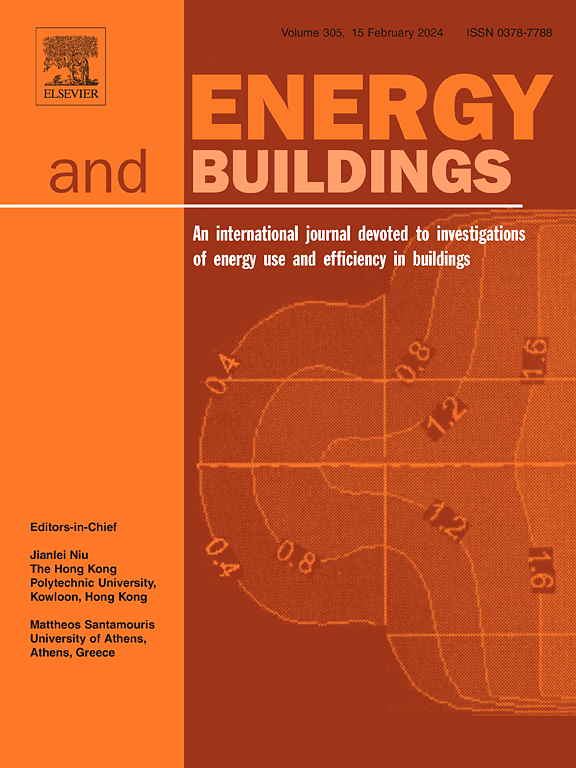一种集成双控制框架的自维持单级太阳能收集系统在智能通风中的应用
IF 6.6
2区 工程技术
Q1 CONSTRUCTION & BUILDING TECHNOLOGY
引用次数: 0
摘要
在低功率、自维持、多级光伏(PV)系统中,在快速环境条件下实施多种控制逻辑会带来巨大的功率损耗。为了克服这种限制,本工作提出了一种基于三电平升压变换器(TLBC)的单级光伏系统的有效双控制方案。在该方案中,一个优化的微扰&;基于observe (P&;O)算法的输入侧MPPT与基于输出侧PID的负载电压调节双控协调集成,使TLBC内外环参数调谐。对电荷存储、直流电机闭环调速和小功率伺服电机位置控制等几种负载进行了全面的理论、仿真、实验和稳定性分析。通过实验室模拟器和屋顶实验的硬件设置,采用低功耗微控制器来实现所提出的双控制策略,进一步有助于在功率密度为10.09 mW/cm2的情况下实现87.04%的最大增压效率。在自供电实现过程中,电路总损耗仅为20.25%。该系统驱动包括温度测量系统在内的多个传感器来确定环境PV源的温度。各种性能参数,包括自持效率和可变辐照效应已被证明优于现有文献。对于变辐照模式下MPPT算法的动态行为也进行了广泛的研究。该系统最大跟踪效率为99.98%,跟踪时间为63 ms。在输出响应中观察到最大可能的超调16.24%和欠调3.28%。进一步分析了多种模式的部分遮阳案例,最大MPPT跟踪效率高达98.98%,功率转换效率高达>;70.33%的人成功实现了每种遮阳图案的全局功率点跟踪。最后,两个有趣的案例研究,包括自我可持续的自动通风控制和智能空调系统,已经使用开发的设置进行了演示。本文章由计算机程序翻译,如有差异,请以英文原文为准。
An integrated dual control framework for self-sustained single-stage solar energy harvesting system in intelligent air ventilation application
In low-powered, self-sustaining, multistage photovoltaic (PV) systems, implementation of several control logics at rapid environmental conditions brings large power losses. To overcome such limitation, this work presents an efficient dual-control scheme for a three-level boost converter (TLBC) based single-stage PV system. In this proposed scheme, an optimized perturbation & observe (P&O) algorithm-based input side MPPT is integrated with the output side PID based load voltage regulation in dual-control coordination to operate the TLBC with tuned inner-outer loop parameters. Comprehensive theoretical, simulation, experimental and stability analysis have been carried out for several loading including charge-storage, closed-loop speed control of DC motor and positional control by low powered servo motor. The developed hardware-setup with laboratory-simulator and rooftop experiment incorporates a low-powered microcontroller to implement the proposed dual-control strategy which further contributes to achieve maximum boosting efficiency of 87.04 % with power density of 10.09 mW/cm2. The overall circuital loss during self-powered implementation is obtained as only 20.25 %. The developed system has driven multiple sensors including a temperature measuring system to determine the temperature of ambient PV source. Various performance parameters including self-sustaining efficiency and variable irradiance effect have been demonstrated to be superior with respect to existing literature. The dynamic behaviour of the MPPT algorithm under variable irradiance pattern has been extensively studied as well for variable MPPT step sizes. Accordingly, a maximum MPPT tracking efficiency of 99.98 % and tracking time of 63 ms are achieved. The maximum possible overshoot of 16.24 % and undershoot of 3.28 % are observed in the output response. Further, multiple patterns of partial shading cases are analysed with maximum MPPT tracking efficiency of 98.98 % and high power conversion efficiency of > 70.33 % achieving successful global power point tracking for each kind of shading pattern. Finally, two interesting case studies including self-sustainable automated air ventilation control and smart air conditioning system have been demonstrated using the developed set-up.
求助全文
通过发布文献求助,成功后即可免费获取论文全文。
去求助
来源期刊

Energy and Buildings
工程技术-工程:土木
CiteScore
12.70
自引率
11.90%
发文量
863
审稿时长
38 days
期刊介绍:
An international journal devoted to investigations of energy use and efficiency in buildings
Energy and Buildings is an international journal publishing articles with explicit links to energy use in buildings. The aim is to present new research results, and new proven practice aimed at reducing the energy needs of a building and improving indoor environment quality.
 求助内容:
求助内容: 应助结果提醒方式:
应助结果提醒方式:


